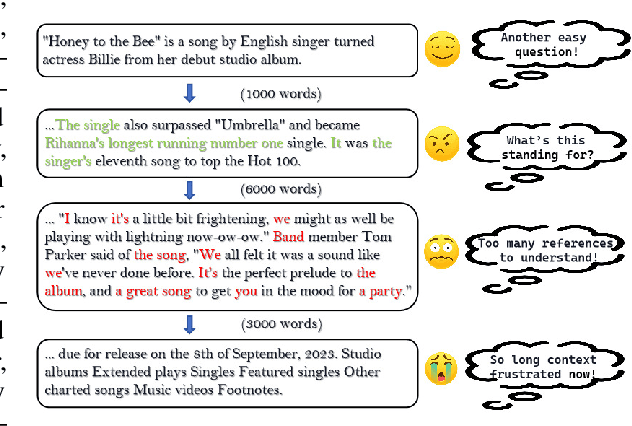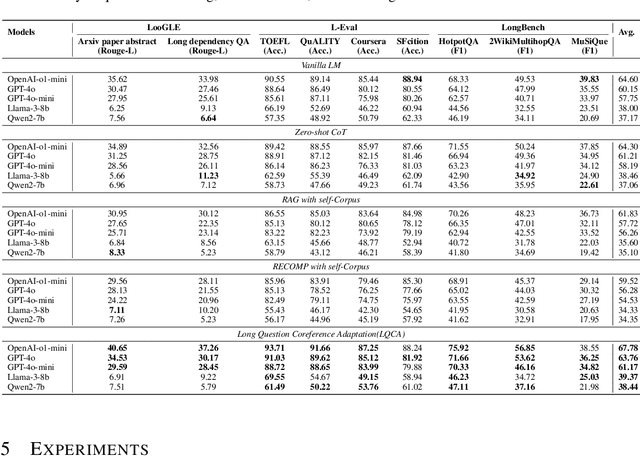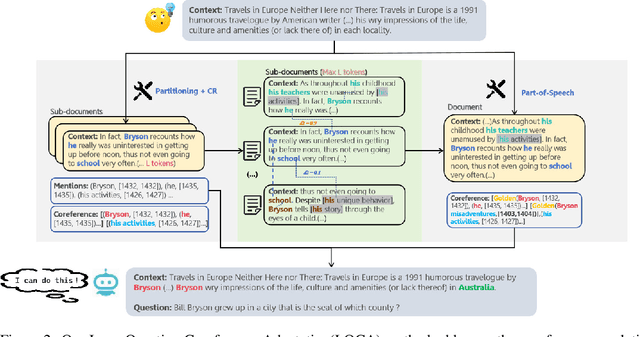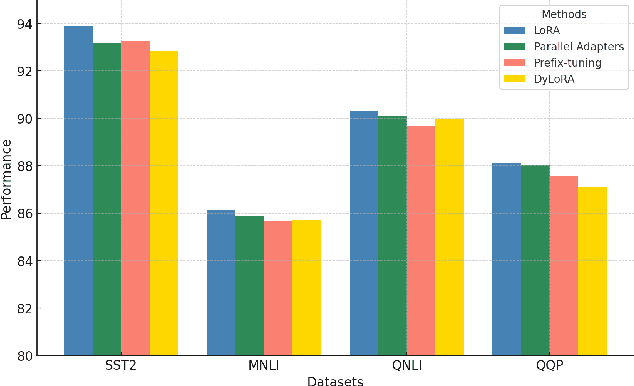Tianyu Du
RAID: An In-Training Defense against Attribute Inference Attacks in Recommender Systems
Apr 15, 2025Abstract:In various networks and mobile applications, users are highly susceptible to attribute inference attacks, with particularly prevalent occurrences in recommender systems. Attackers exploit partially exposed user profiles in recommendation models, such as user embeddings, to infer private attributes of target users, such as gender and political views. The goal of defenders is to mitigate the effectiveness of these attacks while maintaining recommendation performance. Most existing defense methods, such as differential privacy and attribute unlearning, focus on post-training settings, which limits their capability of utilizing training data to preserve recommendation performance. Although adversarial training extends defenses to in-training settings, it often struggles with convergence due to unstable training processes. In this paper, we propose RAID, an in-training defense method against attribute inference attacks in recommender systems. In addition to the recommendation objective, we define a defensive objective to ensure that the distribution of protected attributes becomes independent of class labels, making users indistinguishable from attribute inference attacks. Specifically, this defensive objective aims to solve a constrained Wasserstein barycenter problem to identify the centroid distribution that makes the attribute indistinguishable while complying with recommendation performance constraints. To optimize our proposed objective, we use optimal transport to align users with the centroid distribution. We conduct extensive experiments on four real-world datasets to evaluate RAID. The experimental results validate the effectiveness of RAID and demonstrate its significant superiority over existing methods in multiple aspects.
Bridging the Gap Between Preference Alignment and Machine Unlearning
Apr 09, 2025Abstract:Despite advances in Preference Alignment (PA) for Large Language Models (LLMs), mainstream methods like Reinforcement Learning with Human Feedback (RLHF) face notable challenges. These approaches require high-quality datasets of positive preference examples, which are costly to obtain and computationally intensive due to training instability, limiting their use in low-resource scenarios. LLM unlearning technique presents a promising alternative, by directly removing the influence of negative examples. However, current research has primarily focused on empirical validation, lacking systematic quantitative analysis. To bridge this gap, we propose a framework to explore the relationship between PA and LLM unlearning. Specifically, we introduce a bi-level optimization-based method to quantify the impact of unlearning specific negative examples on PA performance. Our analysis reveals that not all negative examples contribute equally to alignment improvement when unlearned, and the effect varies significantly across examples. Building on this insight, we pose a crucial question: how can we optimally select and weight negative examples for unlearning to maximize PA performance? To answer this, we propose a framework called Unlearning to Align (U2A), which leverages bi-level optimization to efficiently select and unlearn examples for optimal PA performance. We validate the proposed method through extensive experiments, with results confirming its effectiveness.
CopyrightMeter: Revisiting Copyright Protection in Text-to-image Models
Nov 20, 2024



Abstract:Text-to-image diffusion models have emerged as powerful tools for generating high-quality images from textual descriptions. However, their increasing popularity has raised significant copyright concerns, as these models can be misused to reproduce copyrighted content without authorization. In response, recent studies have proposed various copyright protection methods, including adversarial perturbation, concept erasure, and watermarking techniques. However, their effectiveness and robustness against advanced attacks remain largely unexplored. Moreover, the lack of unified evaluation frameworks has hindered systematic comparison and fair assessment of different approaches. To bridge this gap, we systematize existing copyright protection methods and attacks, providing a unified taxonomy of their design spaces. We then develop CopyrightMeter, a unified evaluation framework that incorporates 17 state-of-the-art protections and 16 representative attacks. Leveraging CopyrightMeter, we comprehensively evaluate protection methods across multiple dimensions, thereby uncovering how different design choices impact fidelity, efficacy, and resilience under attacks. Our analysis reveals several key findings: (i) most protections (16/17) are not resilient against attacks; (ii) the "best" protection varies depending on the target priority; (iii) more advanced attacks significantly promote the upgrading of protections. These insights provide concrete guidance for developing more robust protection methods, while its unified evaluation protocol establishes a standard benchmark for future copyright protection research in text-to-image generation.
HijackRAG: Hijacking Attacks against Retrieval-Augmented Large Language Models
Oct 30, 2024



Abstract:Retrieval-Augmented Generation (RAG) systems enhance large language models (LLMs) by integrating external knowledge, making them adaptable and cost-effective for various applications. However, the growing reliance on these systems also introduces potential security risks. In this work, we reveal a novel vulnerability, the retrieval prompt hijack attack (HijackRAG), which enables attackers to manipulate the retrieval mechanisms of RAG systems by injecting malicious texts into the knowledge database. When the RAG system encounters target questions, it generates the attacker's pre-determined answers instead of the correct ones, undermining the integrity and trustworthiness of the system. We formalize HijackRAG as an optimization problem and propose both black-box and white-box attack strategies tailored to different levels of the attacker's knowledge. Extensive experiments on multiple benchmark datasets show that HijackRAG consistently achieves high attack success rates, outperforming existing baseline attacks. Furthermore, we demonstrate that the attack is transferable across different retriever models, underscoring the widespread risk it poses to RAG systems. Lastly, our exploration of various defense mechanisms reveals that they are insufficient to counter HijackRAG, emphasizing the urgent need for more robust security measures to protect RAG systems in real-world deployments.
CoreGuard: Safeguarding Foundational Capabilities of LLMs Against Model Stealing in Edge Deployment
Oct 16, 2024



Abstract:Proprietary large language models (LLMs) demonstrate exceptional generalization ability across various tasks. Additionally, deploying LLMs on edge devices is trending for efficiency and privacy reasons. However, edge deployment of proprietary LLMs introduces new security threats: attackers who obtain an edge-deployed LLM can easily use it as a base model for various tasks due to its high generalization ability, which we call foundational capability stealing. Unfortunately, existing model protection mechanisms are often task-specific and fail to protect general-purpose LLMs, as they mainly focus on protecting task-related parameters using trusted execution environments (TEEs). Although some recent TEE-based methods are able to protect the overall model parameters in a computation-efficient way, they still suffer from prohibitive communication costs between TEE and CPU/GPU, making it impractical to deploy for edge LLMs. To protect the foundational capabilities of edge LLMs, we propose CoreGuard, a computation- and communication-efficient model protection approach against model stealing on edge devices. The core component of CoreGuard is a lightweight and propagative authorization module residing in TEE. Extensive experiments show that CoreGuard achieves the same security protection as the black-box security guarantees with negligible overhead.
CollabEdit: Towards Non-destructive Collaborative Knowledge Editing
Oct 12, 2024



Abstract:Collaborative learning of large language models (LLMs) has emerged as a new paradigm for utilizing private data from different parties to guarantee efficiency and privacy. Meanwhile, Knowledge Editing (KE) for LLMs has also garnered increased attention due to its ability to manipulate the behaviors of LLMs explicitly, yet leaves the collaborative KE case (in which knowledge edits of multiple parties are aggregated in a privacy-preserving and continual manner) unexamined. To this end, this manuscript dives into the first investigation of collaborative KE, in which we start by carefully identifying the unique three challenges therein, including knowledge overlap, knowledge conflict, and knowledge forgetting. We then propose a non-destructive collaborative KE framework, COLLABEDIT, which employs a novel model merging mechanism to mimic the global KE behavior while preventing the severe performance drop. Extensive experiments on two canonical datasets demonstrate the superiority of COLLABEDIT compared to other destructive baselines, and results shed light on addressing three collaborative KE challenges and future applications.
Bridging Context Gaps: Leveraging Coreference Resolution for Long Contextual Understanding
Oct 02, 2024



Abstract:Large language models (LLMs) have shown remarkable capabilities in natural language processing; however, they still face difficulties when tasked with understanding lengthy contexts and executing effective question answering. These challenges often arise due to the complexity and ambiguity present in longer texts. To enhance the performance of LLMs in such scenarios, we introduce the Long Question Coreference Adaptation (LQCA) method. This innovative framework focuses on coreference resolution tailored to long contexts, allowing the model to identify and manage references effectively. The LQCA method encompasses four key steps: resolving coreferences within sub-documents, computing the distances between mentions, defining a representative mention for coreference, and answering questions through mention replacement. By processing information systematically, the framework provides easier-to-handle partitions for LLMs, promoting better understanding. Experimental evaluations on a range of LLMs and datasets have yielded positive results, with a notable improvements on OpenAI-o1-mini and GPT-4o models, highlighting the effectiveness of leveraging coreference resolution to bridge context gaps in question answering.
CLIBE: Detecting Dynamic Backdoors in Transformer-based NLP Models
Sep 02, 2024



Abstract:Backdoors can be injected into NLP models to induce misbehavior when the input text contains a specific feature, known as a trigger, which the attacker secretly selects. Unlike fixed words, phrases, or sentences used in the static text trigger, NLP dynamic backdoor attacks design triggers associated with abstract and latent text features, making them considerably stealthier than traditional static backdoor attacks. However, existing research on NLP backdoor detection primarily focuses on defending against static backdoor attacks, while detecting dynamic backdoors in NLP models remains largely unexplored. This paper presents CLIBE, the first framework to detect dynamic backdoors in Transformer-based NLP models. CLIBE injects a "few-shot perturbation" into the suspect Transformer model by crafting optimized weight perturbation in the attention layers to make the perturbed model classify a limited number of reference samples as a target label. Subsequently, CLIBE leverages the generalization ability of this few-shot perturbation to determine whether the original model contains a dynamic backdoor. Extensive evaluation on three advanced NLP dynamic backdoor attacks, two widely-used Transformer frameworks, and four real-world classification tasks strongly validates the effectiveness of CLIBE. We also demonstrate the robustness of CLIBE against various adaptive attacks. Furthermore, we employ CLIBE to scrutinize 49 popular Transformer models on Hugging Face and discover one exhibiting a high probability of containing a dynamic backdoor. We have contacted Hugging Face and provided detailed evidence of this model's backdoor behavior. Moreover, we extend CLIBE to detect backdoor text generation models modified to exhibit toxic behavior. To the best of our knowledge, CLIBE is the first framework capable of detecting backdoors in text generation models without access to trigger input test samples.
LABOR-LLM: Language-Based Occupational Representations with Large Language Models
Jun 25, 2024Abstract:Many empirical studies of labor market questions rely on estimating relatively simple predictive models using small, carefully constructed longitudinal survey datasets based on hand-engineered features. Large Language Models (LLMs), trained on massive datasets, encode vast quantities of world knowledge and can be used for the next job prediction problem. However, while an off-the-shelf LLM produces plausible career trajectories when prompted, the probability with which an LLM predicts a particular job transition conditional on career history will not, in general, align with the true conditional probability in a given population. Recently, Vafa et al. (2024) introduced a transformer-based "foundation model", CAREER, trained using a large, unrepresentative resume dataset, that predicts transitions between jobs; it further demonstrated how transfer learning techniques can be used to leverage the foundation model to build better predictive models of both transitions and wages that reflect conditional transition probabilities found in nationally representative survey datasets. This paper considers an alternative where the fine-tuning of the CAREER foundation model is replaced by fine-tuning LLMs. For the task of next job prediction, we demonstrate that models trained with our approach outperform several alternatives in terms of predictive performance on the survey data, including traditional econometric models, CAREER, and LLMs with in-context learning, even though the LLM can in principle predict job titles that are not allowed in the survey data. Further, we show that our fine-tuned LLM-based models' predictions are more representative of the career trajectories of various workforce subpopulations than off-the-shelf LLM models and CAREER. We conduct experiments and analyses that highlight the sources of the gains in the performance of our models for representative predictions.
MemDPT: Differential Privacy for Memory Efficient Language Models
Jun 16, 2024



Abstract:Large language models have consistently demonstrated remarkable performance across a wide spectrum of applications. Nonetheless, the deployment of these models can inadvertently expose user privacy to potential risks. The substantial memory demands of these models during training represent a significant resource consumption challenge. The sheer size of these models imposes a considerable burden on memory resources, which is a matter of significant concern in practice. In this paper, we present an innovative training framework MemDPT that not only reduces the memory cost of large language models but also places a strong emphasis on safeguarding user data privacy. MemDPT provides edge network and reverse network designs to accommodate various differential privacy memory-efficient fine-tuning schemes. Our approach not only achieves $2 \sim 3 \times$ memory optimization but also provides robust privacy protection, ensuring that user data remains secure and confidential. Extensive experiments have demonstrated that MemDPT can effectively provide differential privacy efficient fine-tuning across various task scenarios.
 Add to Chrome
Add to Chrome Add to Firefox
Add to Firefox Add to Edge
Add to Edge